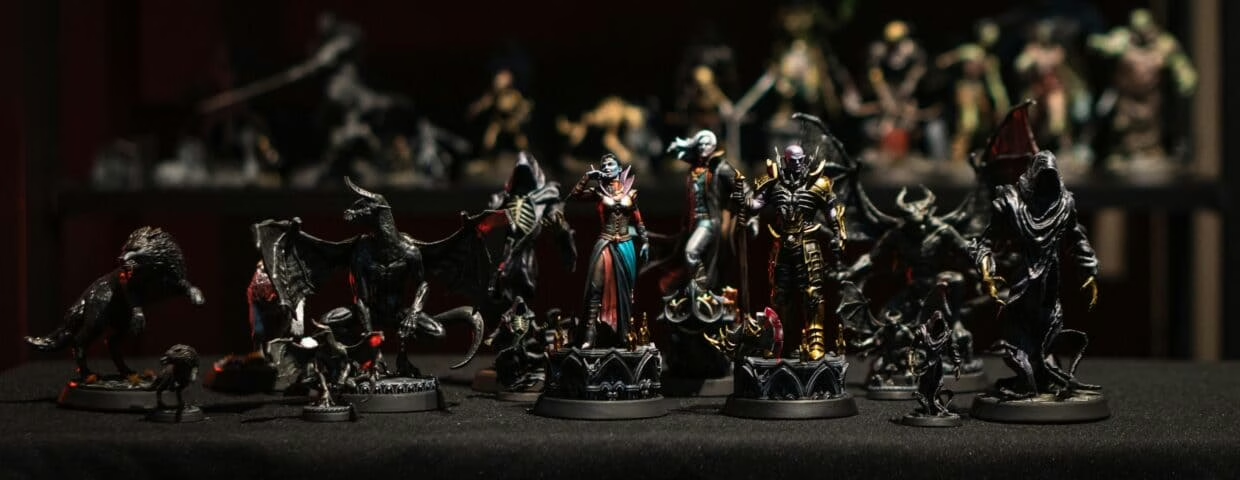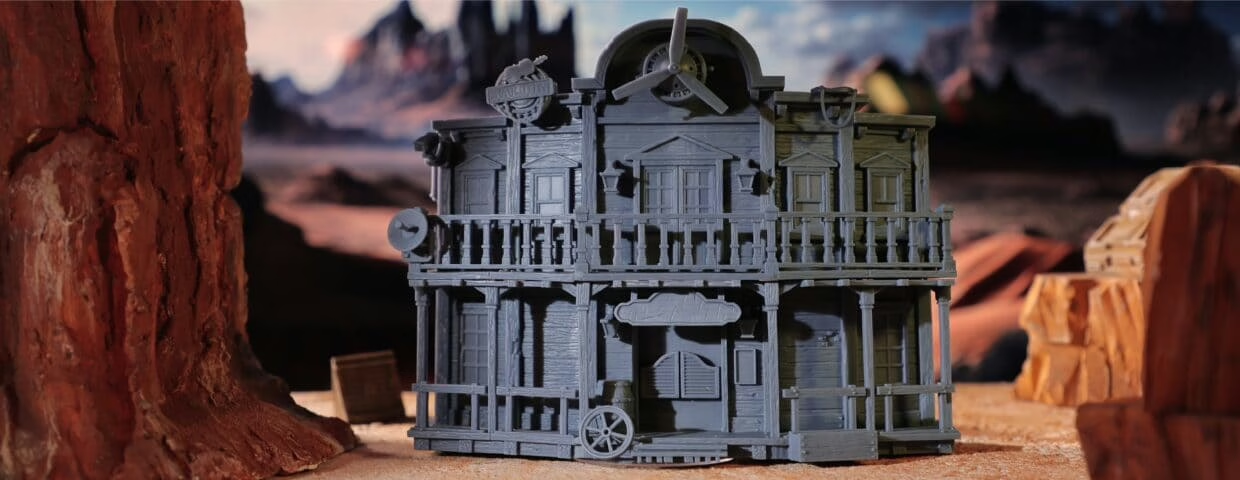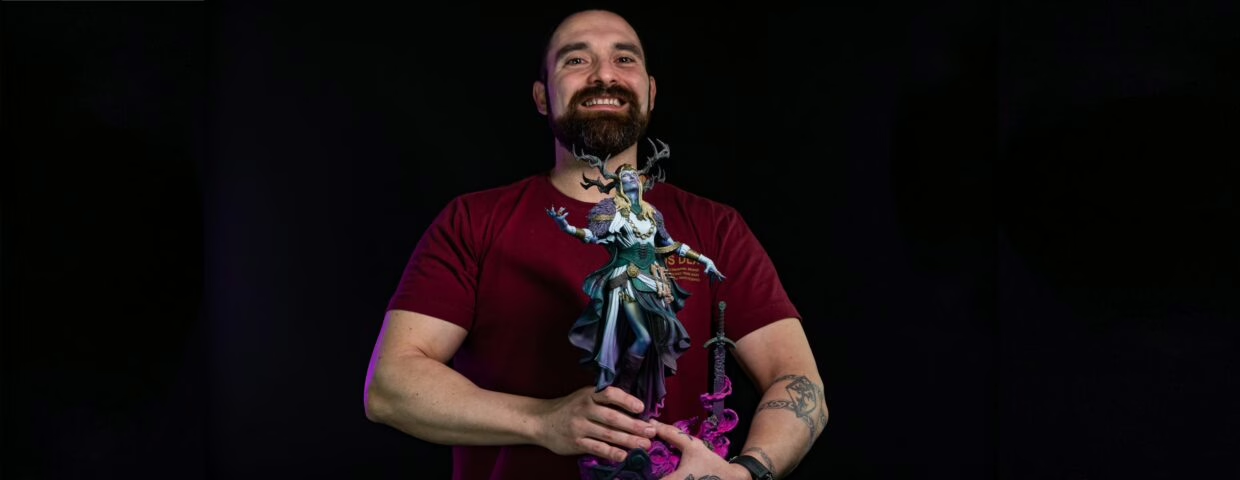The Ultimate Guide to 3D Printable Miniatures
From STL Files to Epic Tabletop Campaigns
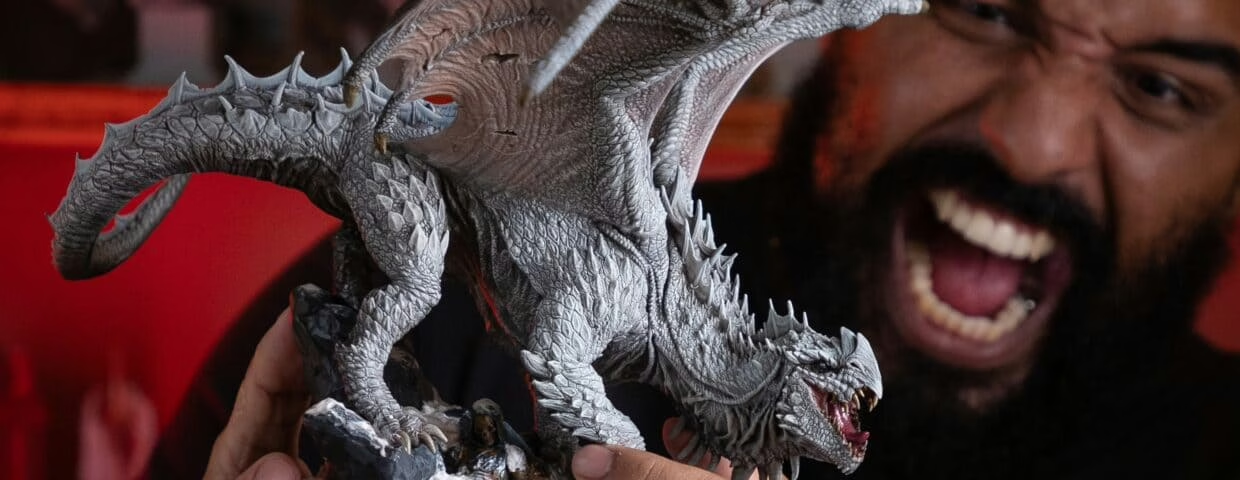
Here’s everything you need to know about 3D printable miniatures. Really, everything”
If you’ve been around the world of tabletop games — like we hope you are —, chances are you’ve already stumbled upon 3D printable miniatures. These small but mighty pieces have completely changed the way players, dungeon masters, and collectors interact with their favorite games. But what exactly are they, how do they work, where did they come from, and why are they suddenly everywhere? This guide is here to break down everything you need to know, from STL files to the materials you’ll need. You can decide if 3D printing your own D&D miniatures or 3D miniatures is the next step for your tabletop journey.
And if you’re curious about becoming a true 3D Printing Hero, you can check out this free course for even more insights.
What is 3D Printing?
Before diving into the specifics of 3D printable miniatures, let’s take a step back. What is 3D printing? At its core, 3D printing (also called additive manufacturing) is a process where objects are created layer by layer, directly from a digital file. Unlike traditional manufacturing, which carves or molds material, 3D printing builds from the ground up.
The technology first appeared in the early 1980s, so if you’re wondering, “When was 3D printing invented?”, the answer is 1981, precisely, with Dr. Hideo Kodama’s pioneering work. He created one of the first rapid prototyping machines that created parts layer by layer, using a resin that could be polymerized by UV light, meaning “become plastic as we know it”. This process of curing is called stereolithography (SLA).
Sadly, the title of 3D printer’s inventor doesn’t go to Dr. Kodama. It goes to Chuck Hull, who patented the SLA and began commercializing the technology. He also created the “.STL” format, which remains the most common file type for 3D printing. Fast-forward to 2004. That year proved to be a landmark for 3D printing technology. This was thanks to the rise of an open-source initiative called the RepRap Project, founded by Dr. Adrian Bowyer.
The RepRap Project started in England in 2004. Its goal was simple: create 3D printers that could be used for rapid prototyping and manufacture their own plastic components. Thanks to this initiative, 3D printers are now accessible enough for home use. You can now create customized, detailed objects for whatever purpose you set your mind to.
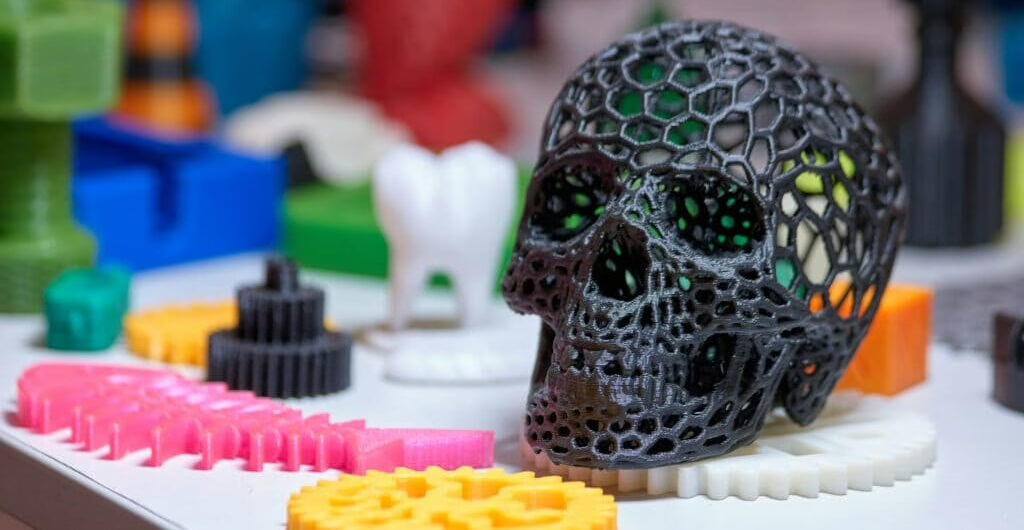
STL Files and the Digital Side of Miniatures
If you’ve researched the topic, you’ve probably seen the acronym “STL” everywhere. So, let’s answer the question: What are 3D printable files? What is STL?
An STL file is the most common format for 3D printing useful stuff, including 3D printable items like miniatures. Think of it as the blueprint. It describes the surface geometry of a 3D object without any color or texture, making it perfect for the fine detail required in 3D miniatures.
By the way, Loot Studios releases highly detailed STL files every month, designed specifically for tabletop gaming. If you want to explore without commitment, you can even get some STL files for free and test the waters before diving deeper.
But I digress…
More and more companies are entering the 3D space. Continual advancements are happening in technology such as VR (Virtual Reality), AR (Augmented Reality), game design, VFX, and long-standing CAD (Computer Aided Design) applications. It is only natural that new file types surface to handle these different capabilities.
Generally speaking, you’ll encounter two types of formats. These are polygonal geometric data and boundary representation (BREP). The format depends on where the geometry was originally constructed. To preserve the higher-level geometric information in the CAD world, you’ll encounter a separate set of file formats. These also contain standard polygonal data used in 3D printing and in gaming applications.
Depending on what you want to print, different types of files are better than others. For us, who just want little plastic people to play with, you can choose an STL file. However, if you want to explore more of this universe of types of files, you can check this article about 3D File Formats.
The Costs of 3D Printing Minis
One of the biggest questions newcomers ask is: How much does 3D printing cost? The answer depends on what you want to achieve.
At the entry level, resin printers are surprisingly affordable, with machines like the Elegoo Mars or Anycubic Photon often costing less than a handful of premium store-bought miniatures. The real costs, however, come from resin, cleaning materials, and time investment. That said, once you’ve set up, the price per miniature is dramatically lower than buying individual figures at retail.
This cost advantage is why so many people weigh the debate of Buying vs. Printing Miniatures. While both have their benefits, 3D printable miniatures give unmatched flexibility and creative control.
Why 3D Printable Miniatures Matter
Tabletop role-playing games like Dungeons & Dragons thrive on immersion. A story told through imagination becomes even richer when you can see your characters, enemies, and landscapes come to life on the table. This is where 3D printable miniatures make a difference.
Unlike traditional minis bought from a store, 3D printable ones give you control over scale, pose, and even the story you want to tell. They bridge the gap between creativity and practicality. And while companies like Loot Studios are known for pushing the boundaries of design, the true magic happens when you bring those digital models into physical reality.
A Whole New & Engaging World
One of the most immediate benefits of incorporating 3D miniatures is the way they change the flow of gameplay. This is true whether you use individual minis or full terrain pieces. When your party navigates a dungeon, positioning and strategy take on new importance. This is because the dungeon has actual walls, elevation changes, and interactive elements. This visual aid is also more accessible to players. They may have a hard time imagining how the combat is going.
Besides, cover mechanics become intuitive when players can physically see where barriers are. Line of sight matters more when a towering statue or dense cluster of trees actually blocks the view across the battlefield. These elements don’t just look impressive—they make combat and exploration more dynamic. And, let’s be honest: it’s pretty cool to see a mini world in front of you.
And there’s the sentimental side of it. Having a miniature that accurately represents your character can strengthen your connection to the role-playing experience. (I, for one, get really attached to my characters…).
There’s a difference between imagining your noble paladin standing against a horde of undead and actually moving a custom-painted figure. This figure might stand on a crumbling, 3D-printed castle battlement. That tangible representation helps ground the fantasy in reality. It makes triumphs feel more satisfying and losses more impactful.
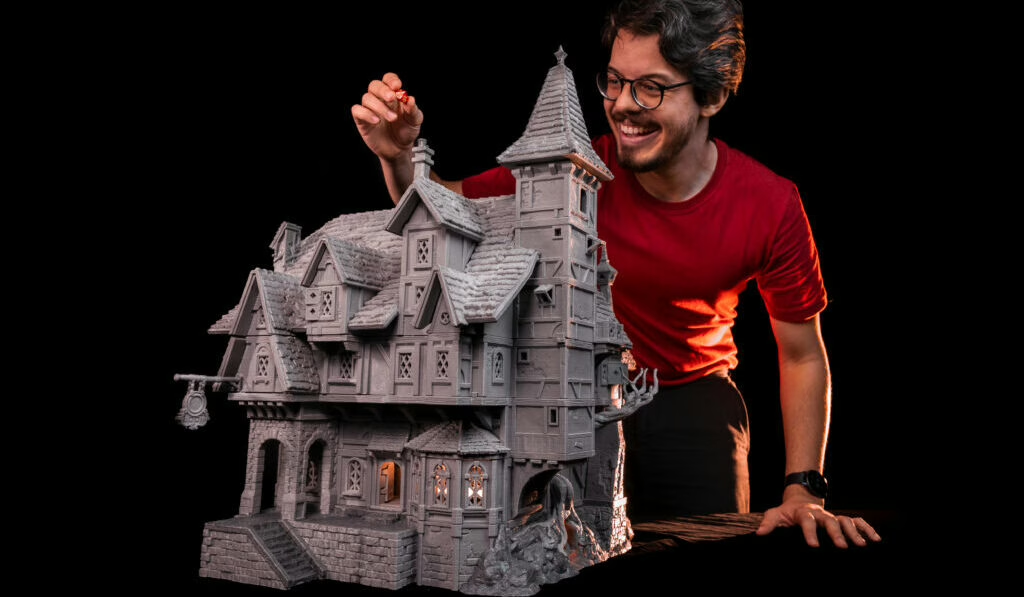
It’s All About Details
Beyond miniatures and terrain, having 3D miniatures allows for the creation of physical props. These can serve as memorable storytelling tools. And, OMG, I love props. When your DM hands you a mysterious artifact —that they printed out— you are able to hold it at the table. Chef’s kiss. Or when you receive a printed scroll with in-game lore, you can track your party’s accumulated treasure. This is done with actual coins and gem tokens. A-mazing.
These small details reinforce the fiction in a way that digital notes or verbal descriptions can’t quite match. And I think it’s beautiful.
Even practical accessories—like initiative trackers, condition markers, or spell effect templates—can streamline gameplay while maintaining immersion. Instead of scribbling turn order on scrap paper, a well-designed tracker keeps everyone engaged. Instead of trying to remember which enemy is stunned or poisoned, a simple ring around a miniature provides an instant visual cue. These might seem like minor improvements, but they add up. Plus, you don’t waste so much time on remembering things.
While this author loves talking about how great it is to have 3D printable minis and How to Create More Immersive Game Sessions with them, let’s talk practical. How on Earth’s name are we to decide which printer to buy to have all these amazing experiences?
Which 3D Printer Should I Buy?
And the answer depends on your goals.
If you’re looking to print highly detailed D&D miniatures, resin printers (SLA or MSLA) are the way to go. Their precision captures every scar, scale, and sword edge. If your focus is on larger 3D printable items or functional objects, terrain, and props, FDM printers are more practical, cheaper, and easier to deal with.
Resin Printers
They are a powerful tool for creating highly detailed and precise 3D printable minis. While they may be more expensive and require more post-processing than FDM printers, they can produce high-quality prints for a wide range of applications, and can catch teeny tiny details that an FDM print wouldn’t. If you think a resin printer might be right for you, several excellent brands should be considered. Some popular options include:
- Anycubic Photon Mono 4K
- Elegoo Saturn 2
- Phrozen Sonic Mini 4K.
FDM Printers
Fused deposition modeling (FDM) printers are a type of 3D printers that use a plastic filament to create 3D objects. These printers use a spool of plastic filament (usually made of PLA or ABS) to create 3D objects. Filament printers are more affordable than resin printers, and the filament is relatively cheap.
These printers can produce high-quality prints with good accuracy and surface finish, although the quality may be lower than that of resin printers. The printing quality depends on many factors, including the printer’s resolution and the filament. Regarding speed, they can print relatively quickly, although it depends on the specific printer model and the object’s complexity.
Some popular brands to consider include:
- MakerBot
- Prusa
- Bambu Lab
FOR MORE DETAILED BREAKDOWNS, YOU CAN DIVE INTO GUIDES LIKE:
WHICH 3D PRINTER SHOULD I BUY?
Materials: Which Material is used for 3D Printing?
It all comes down to one word: plastic.
But it depends on what kind of plastic we’re talking about. No mistake here: when it comes to 3D printable miniatures, resin is king. Specifically, UV-sensitive resin works with desktop SLA printers to produce high-resolution and high-detail results. Resin also offers flexibility in post-processing, letting you sand, prime, and paint minis to perfection.
For larger 3D printable items, filaments like PLA or ABS dominate. They are considerably cheap and easy to find. But some of you may wonder… OK, plastic… Isn’t it bad for the environment? Well, yes… But also no… I’ll explain.
Unlike traditional manufacturing processes, such as injection molding, which can produce miniatures from large, imprecise amounts of material, 3D printing is a precision-based, additive process. This means it builds an object by adding material one layer at a time, ensuring that you use almost the exact amount of resin or filament required for the final product.
This resource-efficient method is a game-changer, with studies showing a reduction in waste of up to 90% compared to subtractive manufacturing.
Besides, some 3D printers are already using recycled materials, and that is something that, by design, will be accounted for with a growing interest. The industry is investing a lot of money on research to make the 3D printer business more profitable and sustainable, and the materials cheaper and repurposable.
You can know more about The Environmental Benefits of 3D Printing in our blog.
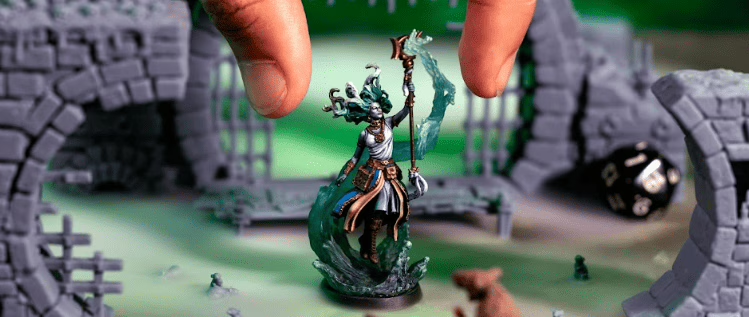
Painting and Customization
It’s different when you’re in an RPG campaign and all minis are gray and evidently plastic, from when playing in a campaign where all minis are colorful and bright.
The journey doesn’t stop at printing. 3D miniatures become truly personal when painted. Just like traditional miniatures, you can prime, paint, and finish your 3D printable miniatures to match your campaign.
Just for kicks, here are some tips for you to start painting your minis like a pro:
Acrylic paints are the go-to for 3D printable minis. No mistakes here.
Begin with a base coat to establish your model’s primary colors. Use a medium-sized brush for large areas, and switch to a smaller brush for intricate parts. Apply thin layers and let each one dry before adding the next. This ensures even coverage and a smooth finish.
Now, what really makes the difference is depth. When you add depth to your minis, that demonstrates that you know how to paint 3D miniatures.
Shading and highlighting can make details stand out: for shading, apply a wash—a thinned-down dark paint that flows into crevices, emphasizing shadows. To highlight, try dry brushing. Load a small amount of paint onto a brush, wipe off most of it, and gently brush over raised areas to bring out details.
YOU CAN GO TO OUR BLOG FOR MORE TIPS ON HOW TO PAINT 3D PRINTS.
Beyond Minis: 3D Printing Useful Stuff
Although our focus is on tabletop, the versatility of 3D printable items is incredible. From dice towers and terrain pieces to storage boxes and even functional home tools, we can do a lot while 3D printing useful stuff.
From 3D miniatures (duh…) to home decoration, you are a print away from taking over the world.
An example? Here’s a personal one: I’m a simple person with simple needs that loves tea. But my tea set wasn’t very presentable because all the tea bags were scattered on the counter.
Well, having my own 3D printer at home, I downloaded a tea bag organizer STL file and printed it myself. Now, my counter is organized thanks to a 3D printer. Yay!
If you want more examples, we have 11 Different Things to Print With Your 3D Printer to show you everything is possible.
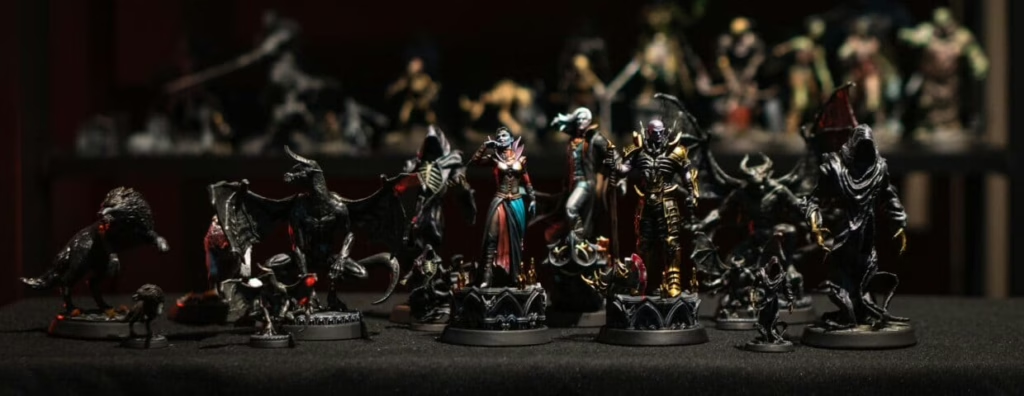
The Future of 3D Printable Miniatures
As technology advances, the quality and accessibility of 3D printable models will only grow. We’re already seeing more sustainable resins, faster printers, and smarter software. If you’re curious about long-term trends, The Future of 3D Printing dives deeper into where this journey is heading.
In healthcare, the technology is revolutionizing patient care with personalized prosthetics and implants, and pushing the boundaries of science with bioprinting, which aims to create functional tissues and organs.
In the aerospace and automotive sectors, engineers are using it to create lightweight, durable parts that improve fuel efficiency and reduce emissions.
On the ground, 3D printing is transforming construction, with projects that build houses and infrastructure faster and with less material waste. And for everyday life, it’s giving rise to a new era of consumer goods, offering custom, on-demand products from furniture to footwear that are tailored just for you.
The Role of Loot Studios
While the world of 3D printing is vast, we have carved a special niche. Loot Studios Miniatures are themed around fantasy, sci-fi, and other genres that fuel tabletop storytelling. With cinematic poses and extraordinary detail, their 3D printable miniatures elevate campaigns from simple skirmishes to unforgettable adventures.
We also make it easier for newcomers by offering our famous Freebies, ensuring no one is left out of the experience.
Final Thoughts
So, whether you’re here to understand what 3D printing is, searching for the best printer, or just curious about D&D miniatures you can create yourself, the world of 3D printable miniatures has something for you. Even if you’re not a tabletop game enthusiast (doubt it), this world of magic plastic has something for you.
Literally, anything your heart desires is one print away.
Loot Studios can help you tell your story through highly detailed miniatures. Choose your favorite bundle from our previous releases or sign up for Fantasy or Sci-Fi to receive at least one new bundle every month. You can also check out some tips on our YouTube Channel.




